29 January, 2024
A study published this month in the journal Frontiers in Marine Science reveals that disturbing the seabed, through activities such as trawling, could increase the scale and speed of climate change.
Scientists, including from British Antarctic Survey (BAS), systematically surveyed animals living at 17 different sites on the Arctic ocean floor. They found that they are storing more carbon than previously thought
.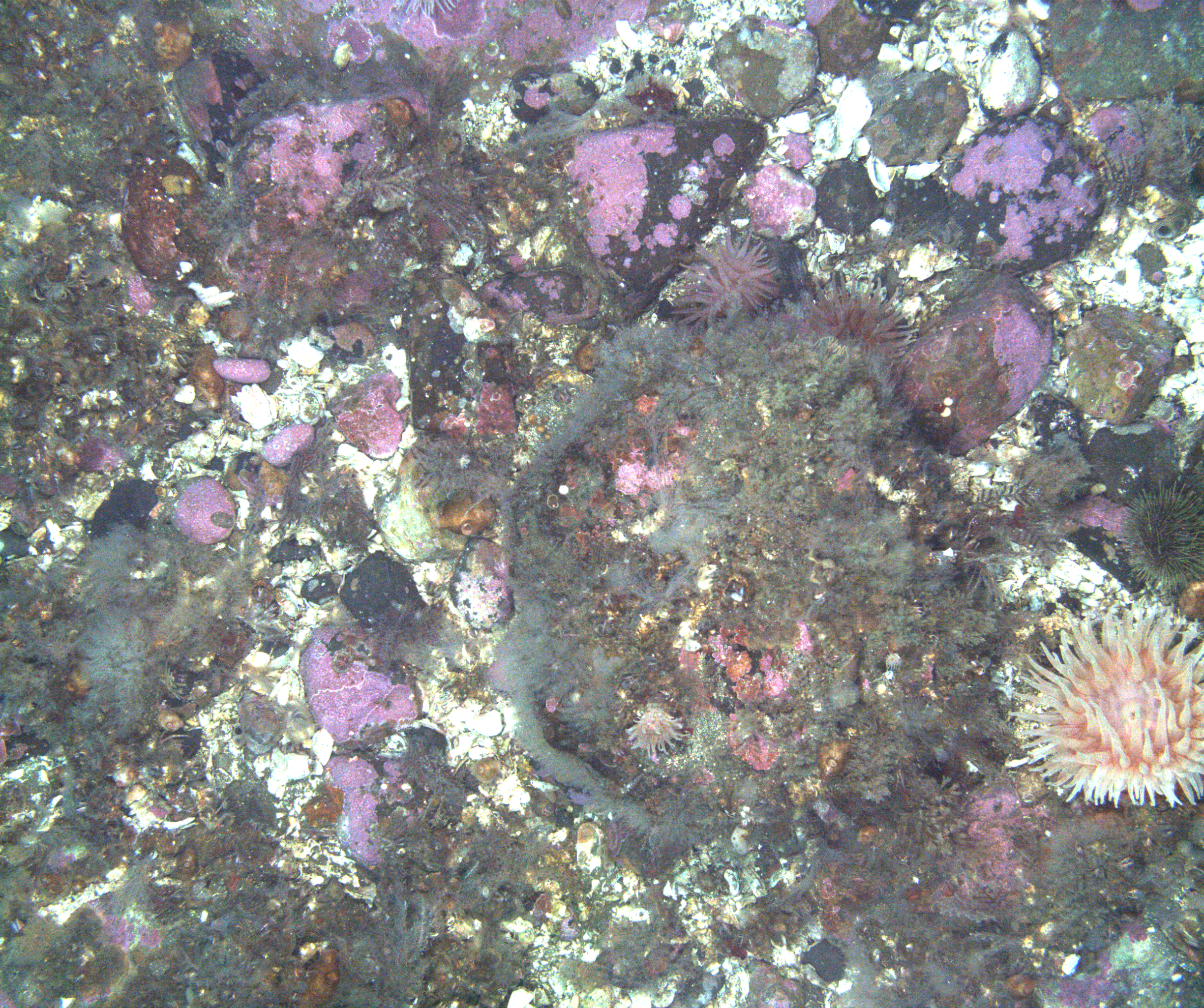

Scientists systematically surveyed animals living at 17 different sites on the floor of the Barents Sea. BAS.
The researchers looked at a variety of seabed habitats, including troughs and shallower water, during two cruises on board RRS James Clark Ross in 2017 and 2019. They took almost 1000 photos of the seabed floor using an underwater camera, and analysed these to see what creatures were present in each habitat. The team also collected samples to see how much carbon they contain.
“Previous estimates have underestimated how much carbon is being removed by marine life because they were based on data from troughs on the ocean floor. We systematically assessed a wider range of seafloor sites and found that far more carbon is being removed in continental shelf waters,” said Dr Terri Souster, the study’s lead investigator, at The Arctic University of Norway.
Seafloor animals, such as corals, sponges, snails and others, extract carbon from their food and the surrounding water to grow and build their skeletons. When they die, their bodies are buried in sediments on the ocean floor, permanently locking away much of the carbon they contain
The researchers looked at a variety of seabed habitats, including troughs and shallower water, during two cruises on board RRS James Clark Ross in 2017 and 2019. They took almost 1000 photos of the seabed floor using an underwater camera, and analysed these to see what creatures were present in each habitat. The team also collected samples to see how much carbon they contain.
“Previous estimates have underestimated how much carbon is being removed by marine life because they were based on data from troughs on the ocean floor. We systematically assessed a wider range of seafloor sites and found that far more carbon is being removed in continental shelf waters,” said Dr Terri Souster, the study’s lead investigator, at The Arctic University of Norway.
Seafloor animals, such as corals, sponges, snails and others, extract carbon from their food and the surrounding water to grow and build their skeletons. When they die, their bodies are buried in sediments on the ocean floor, permanently locking away much of the carbon they contain
.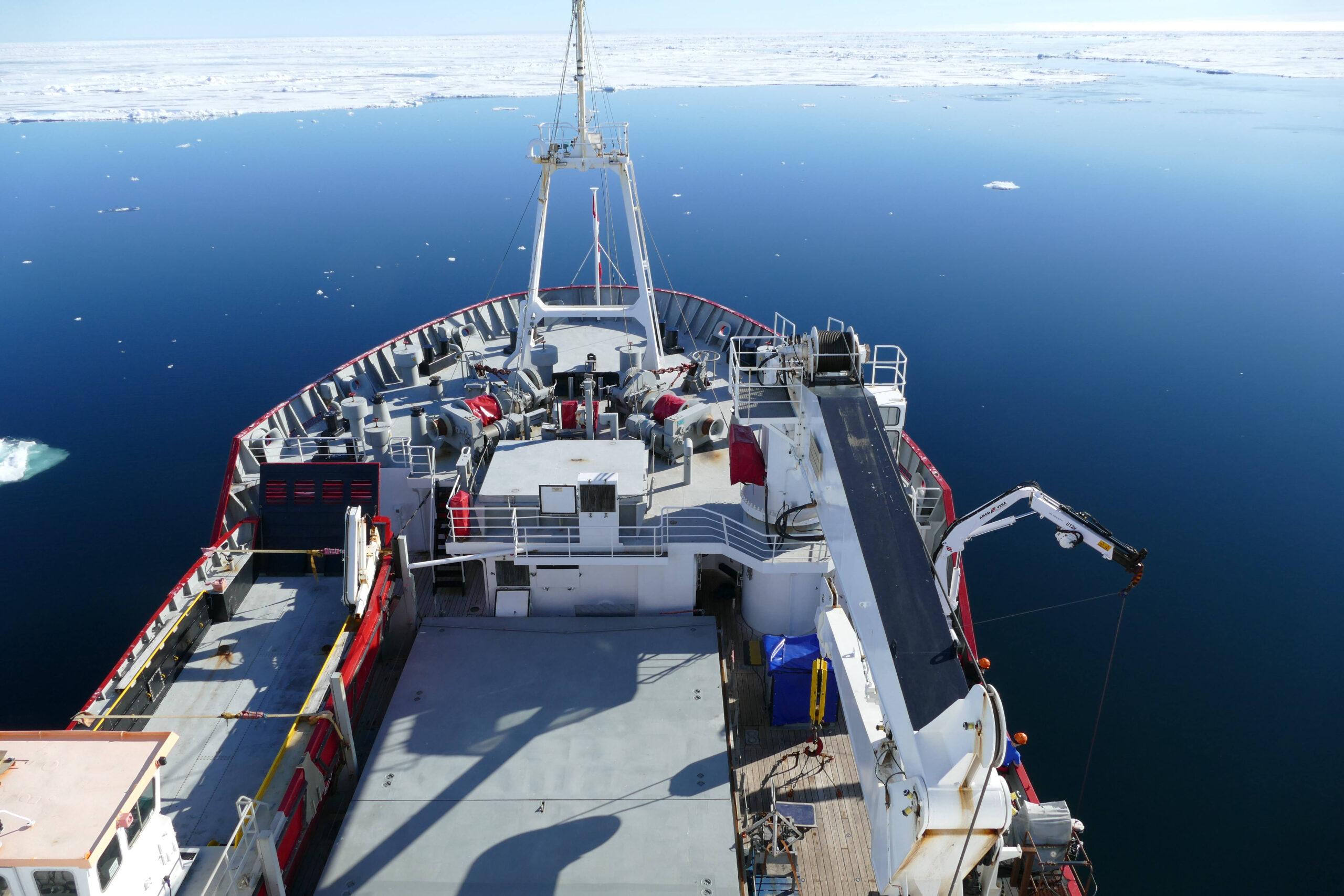

The research was carried out on board RRS James Clark Ross, in the Arctic. Dave Barnes, BAS.
Carbon captured and stored by life in the world’s oceans and coastal wetlands is known as blue carbon, and plays a critical role in reducing the amount of carbon in our atmosphere. Polar coastal ecosystems store much less carbon than mangroves and seagrass meadows per unit area but are huge in area and some are increasing in response to ice loss so are important like terrestrial forests. Learning more about these alternative and emerging marine carbon sinks is therefore important.
During the 2022 United Nations biodiversity conference, governments agreed on a target of protecting at least 30 percent of the world’s waters by 2030.
Dr Dave Barnes, a marine biologist and expert in blue carbon and co-author on the study, at BAS says:
“This study highlights how little we know about functionality of life in the deep, how it affects the global carbon cycle and the benefits nature in the ocean brings society.
“We don’t know which deeper seabed areas store most carbon, so we don’t know what areas we need to prioritise for conservation. Commercial exploitation is racing ahead before we even know what we will be damaging and losing.”
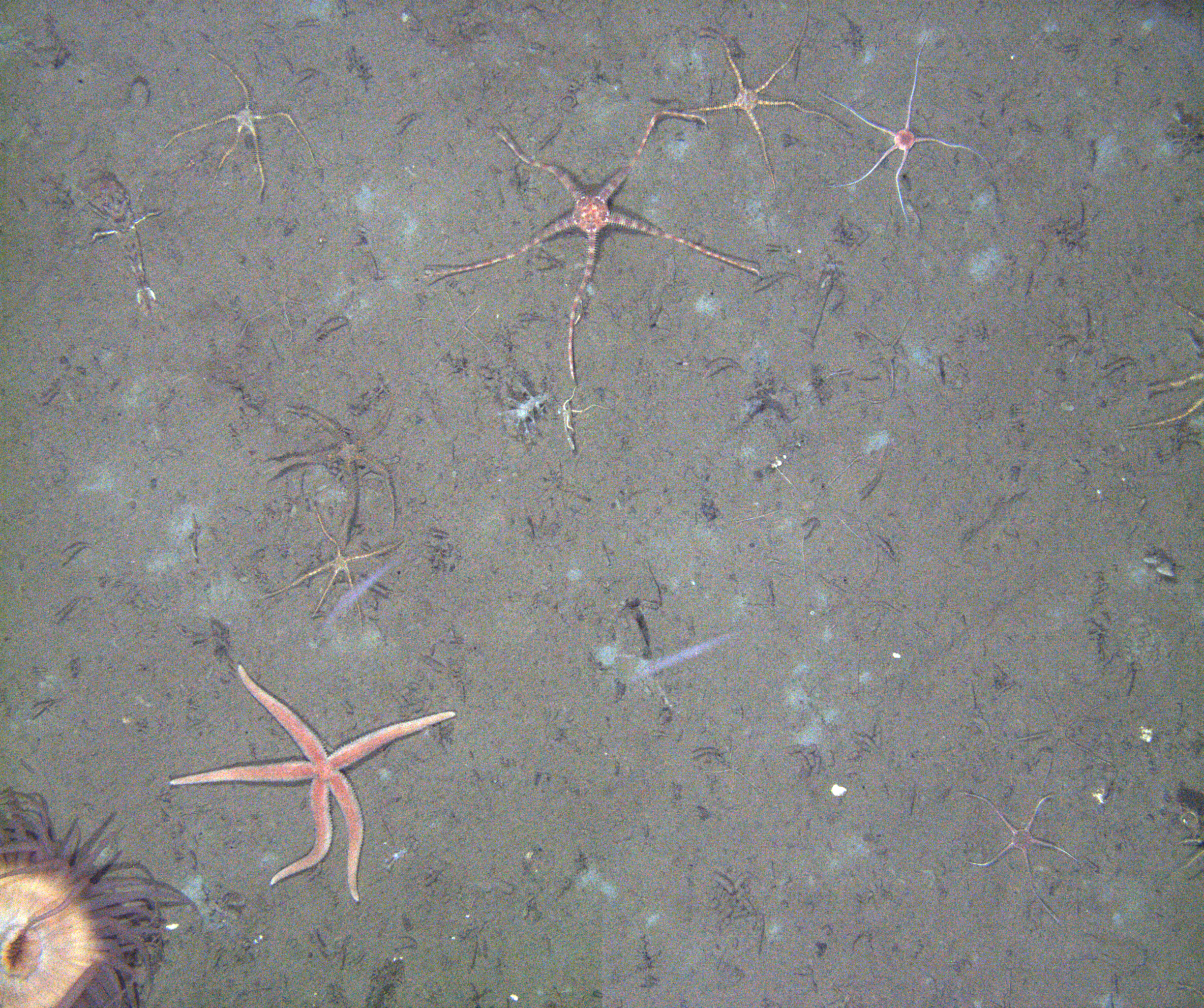
Carbon captured and stored by life in the world’s oceans and coastal wetlands is known as blue carbon, and plays a critical role in reducing the amount of carbon in our atmosphere. Polar coastal ecosystems store much less carbon than mangroves and seagrass meadows per unit area but are huge in area and some are increasing in response to ice loss so are important like terrestrial forests. Learning more about these alternative and emerging marine carbon sinks is therefore important.
During the 2022 United Nations biodiversity conference, governments agreed on a target of protecting at least 30 percent of the world’s waters by 2030.
Dr Dave Barnes, a marine biologist and expert in blue carbon and co-author on the study, at BAS says:
“This study highlights how little we know about functionality of life in the deep, how it affects the global carbon cycle and the benefits nature in the ocean brings society.
“We don’t know which deeper seabed areas store most carbon, so we don’t know what areas we need to prioritise for conservation. Commercial exploitation is racing ahead before we even know what we will be damaging and losing.”

Disturbing the seabed and the creatures that live there, which are important stores of carbon, could increase the scale and speed of climate change. BAS.
The study, which spanned 17 sites in the Barents Sea north of Norway, could inform current political debates about bottom trawling and deep sea mining. Earlier this month, Norway became the first country in the world to move forward with commercial-scale deep-sea mining, inviting companies to apply for mining permits in its national waters. Supporters of the practice argue that it is a cheaper and less environmentally harmful than opening up new mines on land to meet the world’s growing demand for rare minerals that are crucial for the green energy transition.
While some governments have called for an international moratorium on seabed mining until scientific gaps have been filled, others have started taking steps towards launching mining operations of their own. The International Seabed Authority is currently drafting regulations that could eventually allow seabed mining in international waters.
Quantifying zoobenthic blue carbon storage across habitats within the Arctic’s Barents Sea by Souster, T., Barnes, D.K.A., et al. is published in Frontiers in Marine Science.
The study, which spanned 17 sites in the Barents Sea north of Norway, could inform current political debates about bottom trawling and deep sea mining. Earlier this month, Norway became the first country in the world to move forward with commercial-scale deep-sea mining, inviting companies to apply for mining permits in its national waters. Supporters of the practice argue that it is a cheaper and less environmentally harmful than opening up new mines on land to meet the world’s growing demand for rare minerals that are crucial for the green energy transition.
While some governments have called for an international moratorium on seabed mining until scientific gaps have been filled, others have started taking steps towards launching mining operations of their own. The International Seabed Authority is currently drafting regulations that could eventually allow seabed mining in international waters.
Quantifying zoobenthic blue carbon storage across habitats within the Arctic’s Barents Sea by Souster, T., Barnes, D.K.A., et al. is published in Frontiers in Marine Science.
New science facility at British Antarctic Survey to unveil the mysteries of animal life in Antarctica
30 January, 2024
The British Antarctic Survey (BAS) has received the green light to build a new unique science facility at its UK Cambridge headquarters, enabling scientists to understand how organisms that live in cold polar environments evolved and the impact of environmental change on these special ecosystems.
The new Controlled Environment Facility will include a polar marine aquarium (run at -2°C to 0°C), and three environmental experimental rooms (operating at -5°C to 30°C) with precision instruments combined with deep-frozen storage. It will be the only combined low temperature biological storage and experimental facility in the UK and one of three globally.
Polar ecosystems have evolved over many millions of years to live in very cold temperatures and with extremes of light; 24 hours of sunlight in summer and 24 hours of darkness in winter. These ecosystems contain huge amounts of undiscovered biodiversity (it is estimated that there are 20,000 species in the ocean around Antarctica alone), which are under severe threat from climate change. Loss of biodiversity in the polar regions has many consequences beyond ecosystem sustainability and conservation. For example, research at the new facility will enable scientists to identify novel proteins and new compounds for potential applications in medicine, biotechnology, and other industries.
Professor Dame Jane Francis, Director of British Antarctic Survey said: “Our polar regions have unique ecosystems adapted to extreme environments. Climate change and antibiotic resistance are threats to the way we live and our new Controlled Environment Facility will enable world-class collaborative research to develop solutions essential for future generations.
The latest IPCC report recognised that there is currently a knowledge gap in understanding the biology of polar ecosystems and their vulnerability. These facilities will enable research that assimilates cutting edge molecular advances into polar biology and develop new collaborative fields in cold biology with links to cell biophysics, medicine and protein engineering.”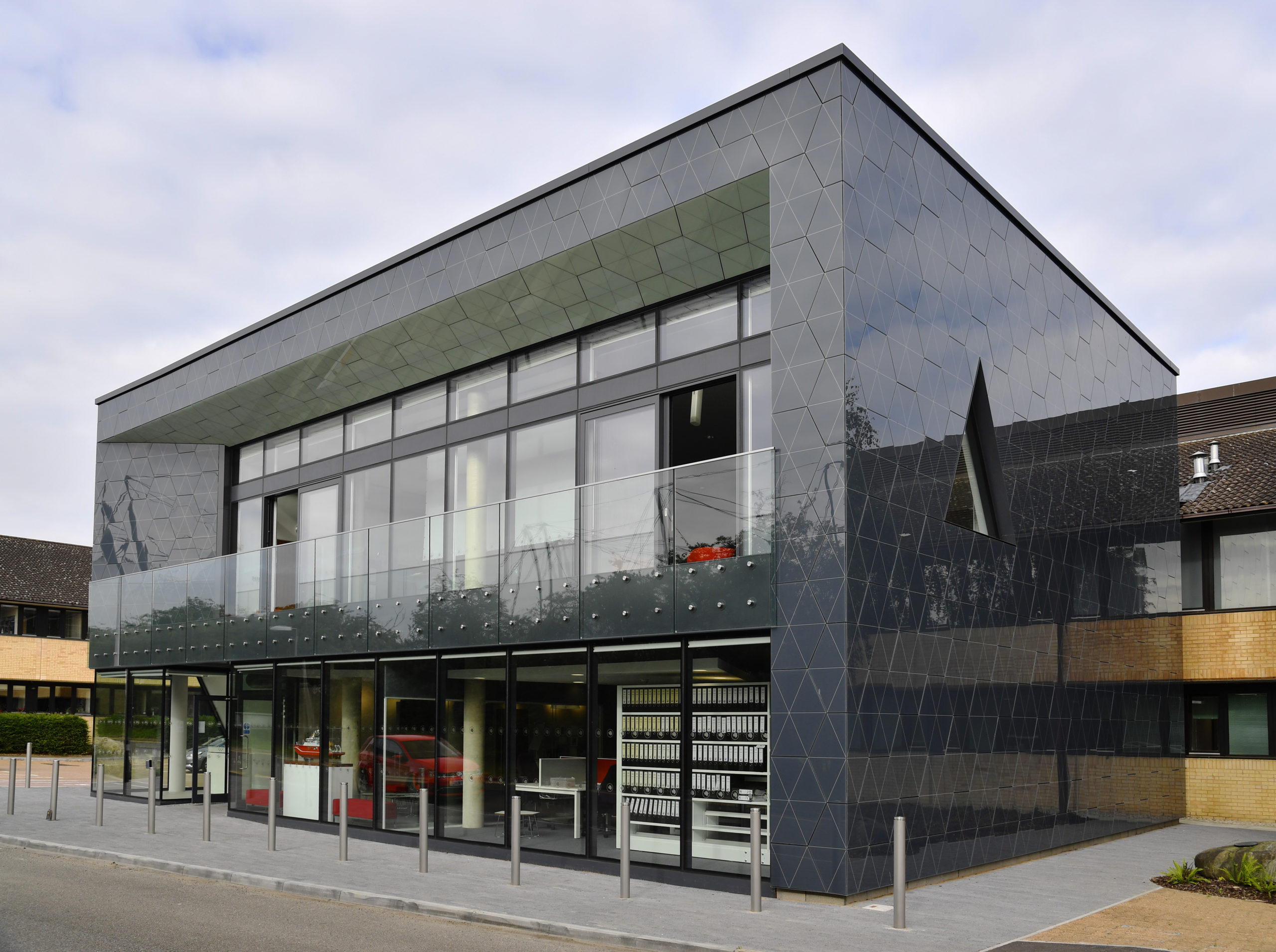
30 January, 2024
The British Antarctic Survey (BAS) has received the green light to build a new unique science facility at its UK Cambridge headquarters, enabling scientists to understand how organisms that live in cold polar environments evolved and the impact of environmental change on these special ecosystems.
The new Controlled Environment Facility will include a polar marine aquarium (run at -2°C to 0°C), and three environmental experimental rooms (operating at -5°C to 30°C) with precision instruments combined with deep-frozen storage. It will be the only combined low temperature biological storage and experimental facility in the UK and one of three globally.
Polar ecosystems have evolved over many millions of years to live in very cold temperatures and with extremes of light; 24 hours of sunlight in summer and 24 hours of darkness in winter. These ecosystems contain huge amounts of undiscovered biodiversity (it is estimated that there are 20,000 species in the ocean around Antarctica alone), which are under severe threat from climate change. Loss of biodiversity in the polar regions has many consequences beyond ecosystem sustainability and conservation. For example, research at the new facility will enable scientists to identify novel proteins and new compounds for potential applications in medicine, biotechnology, and other industries.
Professor Dame Jane Francis, Director of British Antarctic Survey said: “Our polar regions have unique ecosystems adapted to extreme environments. Climate change and antibiotic resistance are threats to the way we live and our new Controlled Environment Facility will enable world-class collaborative research to develop solutions essential for future generations.
The latest IPCC report recognised that there is currently a knowledge gap in understanding the biology of polar ecosystems and their vulnerability. These facilities will enable research that assimilates cutting edge molecular advances into polar biology and develop new collaborative fields in cold biology with links to cell biophysics, medicine and protein engineering.”

The new Controlled Environment Facility will be based at the BAS headquarters in Cambridge
Professor Melody Clark, Genetics Leader at British Antarctic Survey said: “This is an exciting time for polar scientists and wider science in general, as research at the new facility will enable a greater understanding of fundamental biology, with a wide range of applications. For instance, researching how cells and proteins perform in the cold could help develop novel solutions for cryobiology, along with insights into human protein-folding diseases such as Alzheimer’s and Parkinson’s Disease, and creating low energy biological catalysts for Net Zero industries”.
Nigel Garrood, UK Project Manager at British Antarctic Survey said: “We welcome suppliers to engage with a tender process in early 2024 for the construction works. The facility will continue to increase the provision of world class laboratories at BAS and help our ambition to reach net zero carbon emissions by 2040.”
Polar ecosystems are simpler than those in other regions of the world but it is currently unknown if they are more resilient to environmental hazards, as well as climate change. Scientists in the new BAS facility will be able to investigate how pollutants (e.g. metals, micro- and nano-plastics, parasites, diseases) impact polar ecosystems and if the polar environment with cold temperatures and intensive UV is more affected by pollutant and disease toxicity than other global regions.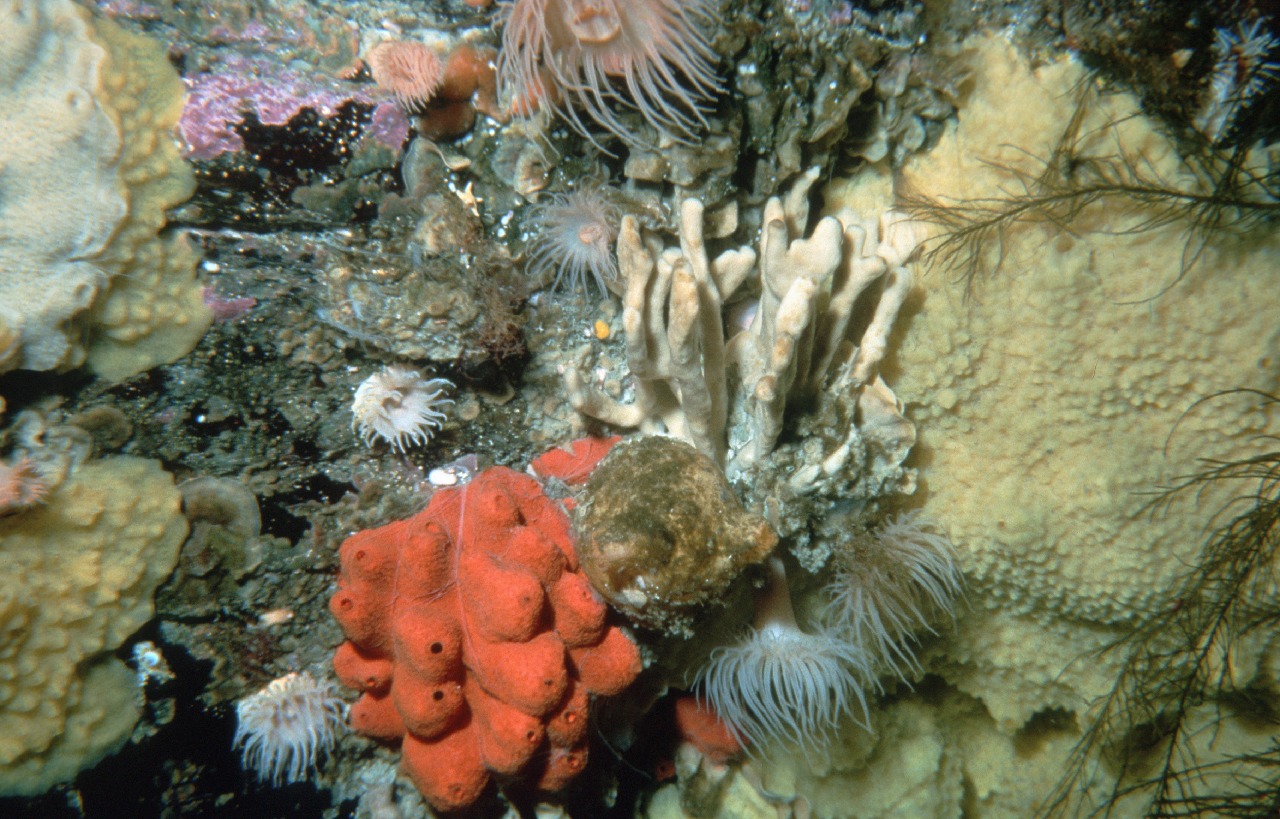
Professor Melody Clark, Genetics Leader at British Antarctic Survey said: “This is an exciting time for polar scientists and wider science in general, as research at the new facility will enable a greater understanding of fundamental biology, with a wide range of applications. For instance, researching how cells and proteins perform in the cold could help develop novel solutions for cryobiology, along with insights into human protein-folding diseases such as Alzheimer’s and Parkinson’s Disease, and creating low energy biological catalysts for Net Zero industries”.
Nigel Garrood, UK Project Manager at British Antarctic Survey said: “We welcome suppliers to engage with a tender process in early 2024 for the construction works. The facility will continue to increase the provision of world class laboratories at BAS and help our ambition to reach net zero carbon emissions by 2040.”
Polar ecosystems are simpler than those in other regions of the world but it is currently unknown if they are more resilient to environmental hazards, as well as climate change. Scientists in the new BAS facility will be able to investigate how pollutants (e.g. metals, micro- and nano-plastics, parasites, diseases) impact polar ecosystems and if the polar environment with cold temperatures and intensive UV is more affected by pollutant and disease toxicity than other global regions.

The Controlled Environment Facility will investigate how polar ecosystems adapt, including invertebrates such as sea sponges.
Using historical samples in the deep-frozen storage facility, researchers will be able to study how whales, sea birds and seals are impacted by changing food webs. These iconic species are at the top of polar food chains and act as an indicator of high latitude ecosystem health. Scientists will also investigate how climate change and humans directly impact polar fisheries that are an important global resource.
The Natural Environment Research Council (NERC) provided funding of £4.2million for the new facility to replace existing infrastructure at BAS that was coming to the end of its working life. Construction on the new Controlled Environment Facility will begin this spring, with the new facility operational from autumn 2025.
Using historical samples in the deep-frozen storage facility, researchers will be able to study how whales, sea birds and seals are impacted by changing food webs. These iconic species are at the top of polar food chains and act as an indicator of high latitude ecosystem health. Scientists will also investigate how climate change and humans directly impact polar fisheries that are an important global resource.
The Natural Environment Research Council (NERC) provided funding of £4.2million for the new facility to replace existing infrastructure at BAS that was coming to the end of its working life. Construction on the new Controlled Environment Facility will begin this spring, with the new facility operational from autumn 2025.
No comments:
Post a Comment